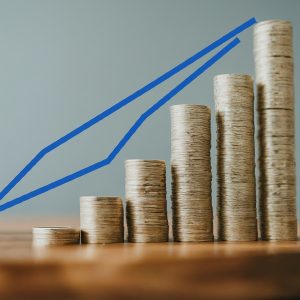Finance
The Petrodollar System: What Is It and How Does It Work

In the convoluted world of international finance, there’s a term that looms large, yet remains shrouded in mystery for many: the Petrodollar System. This intricate network of financial relationships and geopolitical strategies, which has shaped global politics and economics for decades, is often discussed in hushed tones, invoking images of oil-rich sheikhs, international power plays, and endless economic implications. But what exactly is the Petrodollar System, and how does it work?
The Genesis of the Petrodollar System

Photo by Karolina Grabowska: https://www.pexels.com/photo/unrecognizable-man-showing-20-american-dollars-4386395/
To understand the Petrodollar System, we must delve into its historical roots. It all began in the early 1970s when Richard Nixon, then President of the United States, decided to unpeg the U.S. dollar from the gold standard. This significant shift marked the end of the Bretton Woods system and initiated a new era in international finance.
Simultaneously, the Organization of the Petroleum Exporting Countries (OPEC), primarily comprised of oil-rich Middle Eastern nations, wielded its economic power by flexing its oil production muscles. During this period, the majority of global oil transactions were conducted in U.S. dollars. With the U.S. dollar as the dominant global reserve currency and the backbone of international trade, OPEC countries began trading oil exclusively in dollars.
This pivotal moment gave birth to the Petrodollar System.
How Does It Work?
At its core, the Petrodollar System involves OPEC nations accepting U.S. dollars as the exclusive currency for trading oil. In return, these oil-producing countries would receive military protection, economic aid, and political support from the United States. This mutual agreement became a linchpin in global economic and political relations.
The cycle goes something like this:
- OPEC countries sell their oil in U.S. dollars.
- They then reinvest these dollars in U.S. financial assets, such as Treasury bonds.
- The U.S. benefits from this influx of foreign investment, which helps finance its budget deficits and maintain low interest rates.
- OPEC nations, in turn, are given a strategic security umbrella in the form of American military presence in the region.
This symbiotic relationship has long-lasting implications. The U.S. dollar remains the dominant global reserve currency, and the United States maintains considerable influence over OPEC countries, which control a substantial portion of the world’s oil reserves.
Economic Implications
The Petrodollar System has far-reaching economic effects. On one hand, it allows the United States to run persistent trade deficits without worrying about currency devaluation, as other countries require a steady supply of dollars for oil transactions. This, in turn, has fueled the U.S. consumer-driven economy.
On the other hand, this system has been criticized for perpetuating economic inequalities. It is seen as a mechanism through which the United States siphons off wealth from oil-importing countries, who are forced to stockpile U.S. dollars, which can lead to inflation or economic instability.
Geopolitical Significance
From a geopolitical standpoint, the Petrodollar System has undoubtedly shaped U.S. foreign policy, particularly in the Middle East. It has prompted the U.S. to establish a strong military presence in the region, exerting influence and mediating conflicts to protect its oil interests. This geostrategic dance has been the backdrop to many regional conflicts and international controversies.
In conclusion, the Petrodollar System, born from a historical confluence of economic and political interests, has left an indelible mark on the global stage. It underscores the interplay between money, oil, and power, and how these elements shape our world in intricate and often controversial ways. Its implications are complex and far-reaching, making it a fascinating subject for anyone interested in understanding the dynamics of global economics and politics.
Finance
The Role of FinTech in Expanding Financial Inclusion

Financial inclusion, the access to affordable financial products and services, is essential for economic development and poverty reduction. Unfortunately, traditional financial systems have failed to fully cater to marginalized and underserved populations, particularly in developing countries. This is where financial technology, or FinTech, steps in to revolutionize the financial landscape. FinTech refers to innovative technology solutions in the financial sector, and it is playing an instrumental role in increasing financial inclusion. By leveraging digital tools and platforms, FinTech is extending financial services to previously excluded individuals and businesses, helping them participate in the formal economy.
1. Understanding Financial Inclusion and Its Importance
Financial inclusion ensures that individuals and businesses, regardless of their socio-economic status, can access and use financial services that are affordable, transparent, and safe. These services include savings accounts, loans, payment systems, and insurance products, which enable people to manage their finances, save for the future, invest in businesses, and protect themselves from financial risks.
Without access to such services, people often rely on informal financial channels, which are more expensive, less secure, and less reliable. Financial inclusion is crucial for poverty reduction, empowering marginalized groups, and promoting sustainable economic development.
2. How FinTech is Shaping Financial Inclusion
FinTech plays a transformative role in enhancing financial inclusion by addressing the traditional barriers to accessing financial services. These barriers include the lack of physical banking infrastructure, high transaction fees, and stringent requirements for opening accounts or obtaining loans. Here’s how FinTech contributes to financial inclusion:
a. Digital Payments and Mobile Money

This image is taken from google.com
FinTech has revolutionized the way people conduct transactions through mobile money and digital payment systems. Companies like M-Pesa in Kenya have enabled millions of people without access to traditional banks to transfer money, pay bills, and save, all through their mobile phones. Digital wallets and payment platforms such as PayPal, Venmo, and Stripe have further facilitated seamless financial transactions, allowing users to send and receive money quickly and cheaply, even across borders.
b. Alternative Lending Platforms
Traditional lending institutions often require extensive documentation, credit histories, or collateral, making it difficult for small businesses or individuals with poor credit to access loans. FinTech companies like LendingClub and Kiva have introduced alternative lending platforms that use data analytics, machine learning, and peer-to-peer (P2P) lending models to assess creditworthiness and offer microloans. These platforms provide flexible lending options to individuals and small businesses that are typically underserved by banks.
c. Blockchain and Cryptocurrencies
Blockchain technology and cryptocurrencies offer a decentralized financial system that can improve access to financial services for unbanked populations. By eliminating intermediaries, blockchain allows for secure, transparent, and low-cost financial transactions. Cryptocurrencies, like Bitcoin, can be used for cross-border payments, enabling users to bypass traditional banking systems. While still in its early stages, blockchain’s potential for financial inclusion is vast, especially in regions where trust in traditional banking institutions is low.
d. InsurTech (Insurance Technology)
FinTech is also transforming the insurance industry by making insurance products more accessible to low-income and rural populations. Companies like Bima and MicroEnsure offer microinsurance services, which provide low-cost, flexible insurance policies for health, agriculture, and life, all through mobile platforms. This helps individuals in developing countries access affordable insurance and reduce their financial vulnerabilities.
3. Benefits of FinTech in Financial Inclusion
FinTech’s role in financial inclusion comes with several key benefits that make it a game-changer for marginalized communities:
a. Lower Costs
Traditional banking services can be expensive, especially for low-income individuals. FinTech reduces transaction costs through digital platforms, making financial services more affordable. For example, mobile money services usually have lower fees compared to traditional bank transfers, making it cheaper for users to send and receive money.
b. Convenience and Accessibility
FinTech enables access to financial services at any time and from any location, as long as users have an internet connection. This is particularly beneficial for people living in rural areas, where physical banks may be scarce. With just a smartphone, users can open accounts, transfer money, and apply for loans, without the need for a physical branch visit.
c. Financial Empowerment
FinTech promotes financial literacy by offering users more control over their finances through easy-to-use apps and platforms. These tools help individuals manage their money, track expenses, set savings goals, and understand their financial health better. By promoting financial literacy, FinTech empowers users to make informed financial decisions, improving their overall financial well-being.
4. Challenges of FinTech in Expanding Financial Inclusion
Despite its potential, FinTech also faces several challenges in fully achieving financial inclusion:
a. Digital Divide
Access to FinTech services depends on internet connectivity and smartphone ownership, which remain limited in certain parts of the world. In regions with poor digital infrastructure, particularly in rural and underdeveloped areas, the benefits of FinTech may not be fully realized.
b. Cybersecurity Risks
The shift to digital financial services introduces cybersecurity risks, including fraud, hacking, and data breaches. Protecting the personal and financial data of FinTech users is crucial, especially for those new to the digital economy. Developing robust cybersecurity measures is essential for maintaining trust in FinTech services.
c. Regulatory Barriers
FinTech operates in a complex regulatory environment that varies across countries. In some regions, regulatory frameworks are not well-developed, which can hinder the growth of FinTech companies and limit their ability to offer services across borders. Balancing innovation with regulation is crucial for fostering a secure and inclusive FinTech ecosystem.
5. The Future of FinTech and Financial Inclusion
Looking ahead, the role of FinTech in promoting financial inclusion is expected to grow, as advancements in technology continue to open up new possibilities. Here are some trends to watch:
a. Artificial Intelligence (AI) and Big Data
AI and Big Data are increasingly being used to assess credit risk, detect fraud, and personalize financial products for underserved populations. By analyzing alternative data sources, FinTech firms can offer tailored financial services to individuals without traditional credit histories, further expanding financial inclusion.
b. Partnerships Between FinTech and Traditional Banks
Collaboration between FinTech companies and traditional financial institutions is becoming more common. These partnerships allow banks to leverage FinTech innovations to reach new customer segments while maintaining the security and regulatory compliance of established financial systems. This hybrid model can help bridge the gap between formal financial systems and underserved populations.
c. RegTech (Regulatory Technology)
RegTech uses technology to streamline regulatory compliance for financial institutions. As FinTech grows, so does the need for regulatory oversight to ensure consumer protection and prevent financial crimes. RegTech solutions help FinTech companies navigate complex regulatory environments, enabling them to expand their services more effectively while maintaining compliance.
6. Case Study: M-Pesa’s Impact on Financial Inclusion in Kenya
M-Pesa, a mobile money platform launched in Kenya in 2007, is one of the most successful examples of how FinTech can expand financial inclusion. Before M-Pesa, only a small percentage of the Kenyan population had access to traditional banking services. Today, more than 70% of Kenyan adults use M-Pesa to send and receive money, save, and pay bills. The platform has significantly improved access to financial services, particularly in rural areas, and has been credited with reducing poverty and boosting economic growth in the country. M-Pesa’s success has inspired similar mobile money initiatives in other developing countries, demonstrating the transformative potential of FinTech.
Comparative Table: FinTech vs Traditional Financial Systems
| Aspect | FinTech | Traditional Financial Systems |
|---|---|---|
| Accessibility | Available online, often 24/7 | Limited to physical branches |
| Costs | Lower transaction fees | Higher transaction fees |
| Documentation Requirements | Minimal, uses alternative data | Requires extensive documentation |
| Speed of Transactions | Instant or near-instant | Can take days or weeks |
| Geographic Reach | Global, accessible from anywhere | Limited by physical infrastructure |
| Security Concerns | Cybersecurity risks | Strong regulatory framework |
| Product Innovation | Rapid and flexible | Slow and rigid |
Analysis Table: Benefits and Challenges of FinTech in Financial Inclusion
| Benefit | Challenge |
|---|---|
| Lower costs for users | Requires internet connectivity |
| Increased accessibility | Cybersecurity threats |
| Promotes financial literacy | Regulatory hurdles |
| Flexible lending options | Limited digital infrastructure in some regions |
Conclusion
FinTech has become a key driver of financial inclusion, providing affordable, accessible, and innovative solutions to individuals and businesses that have been excluded from traditional financial systems. By overcoming traditional barriers, such as lack of infrastructure and high costs, FinTech is helping millions of people improve their financial lives. While there are challenges to address, including the digital divide, cybersecurity, and regulatory frameworks, the future of FinTech is bright, with advancements in technology promising even greater strides toward global financial inclusion.
Finance
How Digital Banking is Shaping the Future of Finance

Digital banking is rapidly transforming the financial landscape, offering unprecedented convenience and accessibility. This shift is not only changing how consumers interact with their banks but also revolutionizing the entire financial system. In this article, we’ll explore how digital banking is shaping the future of finance, focusing on key innovations, their impact on consumers, and what the future holds for both traditional and digital banks.
Introduction to Digital Banking
Digital banking refers to the use of digital platforms, such as mobile apps and websites, to conduct financial transactions and manage banking activities. It goes beyond online banking, offering a comprehensive suite of services that replicate the experience of a physical bank in a virtual environment. This includes services like opening accounts, transferring funds, applying for loans, and even managing investments, all from the comfort of your home or while on the go.
As technology advances, digital banking is becoming more accessible, secure, and efficient. Traditional banks are adopting these technologies to remain competitive, while digital-only banks, or “neobanks,” are gaining traction for their user-friendly interfaces and innovative services.
Key Innovations in Digital Banking
Digital banking has brought about several key innovations that are shaping the future of finance. These innovations are centered around automation, artificial intelligence (AI), data analytics, and customer-centric approaches. Here are some of the most significant developments:
1. Mobile Banking and Apps
Mobile banking is one of the most significant advancements in digital banking. Consumers can now access their accounts, pay bills, transfer funds, and manage their finances via mobile apps. These apps offer real-time notifications, budgeting tools, and personalized financial insights, making it easier for users to control their spending and savings.
2. Artificial Intelligence and Automation
AI-powered chatbots and virtual assistants are increasingly being used by banks to handle customer inquiries, provide support, and even offer financial advice. Automation also plays a significant role in streamlining processes like loan approvals, fraud detection, and personalized marketing. These technologies help reduce operational costs for banks and improve the customer experience by offering faster, more accurate services.
3. Blockchain and Cryptocurrencies
Blockchain technology and cryptocurrencies are revolutionizing the way we think about money and financial transactions. Blockchain offers a secure, decentralized way to conduct transactions, while cryptocurrencies like Bitcoin and Ethereum are challenging traditional fiat currencies. Some digital banks have started offering cryptocurrency services, allowing users to buy, sell, and store digital assets directly through their banking apps.
4. Open Banking
Open banking allows third-party developers to build applications and services around financial institutions, promoting greater transparency and innovation. Through open banking, consumers can link their accounts from different banks to a single platform, providing them with a complete view of their financial situation. This integration helps users make informed decisions and manage their money more efficiently.
The Impact of Digital Banking on Consumers
The rise of digital banking has had a profound impact on consumers, particularly in terms of convenience, accessibility, and personalization.
1. Convenience and Accessibility
One of the most significant benefits of digital banking is the convenience it offers. Consumers no longer need to visit a physical branch to manage their finances. Everything from checking account balances to applying for loans can be done online or via mobile apps. This has made banking more accessible to people in remote areas and those with limited mobility.
2. Cost Savings
Digital banks often have lower operational costs than traditional banks, allowing them to offer higher interest rates on savings accounts and lower fees for transactions. This cost-efficiency benefits consumers, who can enjoy more favorable financial terms.
3. Personalized Financial Services
Thanks to AI and data analytics, digital banks can offer personalized services tailored to individual needs. For example, budgeting tools, spending analyses, and tailored financial advice are available to help users manage their finances more effectively. This personalized approach enhances the overall banking experience and helps consumers achieve their financial goals.
4. Security and Fraud Prevention
Digital banking platforms are investing heavily in security measures to protect consumers from fraud and data breaches. Two-factor authentication, biometric verification (such as fingerprint or facial recognition), and encryption technologies are commonly used to ensure that users’ financial information is safe. Additionally, AI-driven systems can detect and prevent fraudulent activities in real time.
Challenges in Digital Banking

Picture by: Google Gemini
While digital banking offers numerous advantages, it also faces challenges that must be addressed to ensure its continued success and growth.
1. Cybersecurity Risks
As digital banking becomes more widespread, the risk of cyberattacks increases. Hackers may attempt to breach systems to steal sensitive data or carry out financial fraud. Banks must continuously invest in robust cybersecurity infrastructure to protect their customers’ data and maintain trust.
2. Digital Divide
Not everyone has equal access to digital banking services. Some individuals, particularly in rural areas or developing countries, may lack the necessary technology or internet access to benefit from digital banking. Addressing this digital divide is crucial for ensuring that everyone can take advantage of the future of finance.
3. Trust and Adoption
Some consumers, particularly older generations, may be hesitant to adopt digital banking due to concerns about privacy and security. Building trust through transparent policies, user education, and customer support is essential for increasing adoption rates.
Traditional Banks vs. Digital Banks
The rise of digital banking has sparked a competition between traditional banks and digital-only banks (neobanks). Here’s a comparative analysis of the two:
| Aspect | Traditional Banks | Digital Banks |
|---|---|---|
| Infrastructure | Physical branches, ATMs | Mobile apps, online platforms |
| Customer Support | In-person, phone, online support | Chatbots, AI-driven support |
| Fees | Higher fees due to physical overhead | Lower fees, often no fees for basic services |
| Accessibility | Limited to branch hours and locations | 24/7 access via apps and websites |
| Personalization | Generalized services | Highly personalized financial advice |
| Security | Traditional measures, human intervention | AI-driven, biometric verification |
| Adoption Rate | Higher among older generations | Popular among millennials and Gen Z |
This comparison highlights that while traditional banks offer the familiarity of in-person interactions, digital banks provide unparalleled convenience, lower costs, and innovative features.
The Future of Digital Banking
As we look ahead, the future of digital banking seems promising. Several trends are expected to shape the industry in the coming years:
1. Expansion of AI and Machine Learning
AI will continue to play a pivotal role in improving customer experiences, automating processes, and enhancing security measures. Machine learning algorithms will provide even more personalized financial advice and fraud detection, leading to a more efficient and secure banking environment.
2. Growth of Neobanks
Neobanks will likely continue to grow in popularity, especially among younger generations. As they offer more innovative services, better user experiences, and cost savings, traditional banks will need to adapt or collaborate with these digital disruptors to stay competitive.
3. Integration of Blockchain Technology
Blockchain’s potential to streamline payments, enhance security, and reduce transaction costs will likely lead to its broader adoption within digital banking. This could also result in greater acceptance of cryptocurrencies within mainstream financial services.
4. Greater Focus on Sustainability
Consumers are increasingly seeking out environmentally conscious financial institutions. Digital banks, with their lower carbon footprints compared to traditional banks (which require physical branches and infrastructure), are well-positioned to lead the charge in offering sustainable financial services.
Analysis Table: Key Innovations in Digital Banking
| Innovation | Description | Impact |
|---|---|---|
| Mobile Banking Apps | Access to banking services via smartphone apps | Increased convenience and accessibility |
| AI and Automation | Use of AI for customer service, loan approvals, fraud detection | Lower operational costs, faster service |
| Blockchain & Cryptocurrencies | Secure, decentralized transactions, and alternative currencies | Enhanced security, new financial products |
| Open Banking | Integration of various financial services under one platform | Improved transparency and financial management |
Comparative Table: Digital Banks vs. Traditional Banks
| Aspect | Traditional Banks | Digital Banks |
|---|---|---|
| Infrastructure | Physical branches | Fully digital |
| Fees | Higher fees for services | Lower or no fees |
| Accessibility | Limited hours and locations | 24/7 access |
| Security | Traditional measures | Advanced AI and biometrics |
| Customer Experience | In-person and phone support | Automated, AI-driven |
| Popularity | Preferred by older generations | Popular with younger, tech-savvy users |
Conclusion
Digital banking is undeniably shaping the future of finance by offering convenience, personalization, and efficiency that traditional banks struggle to match. As technology continues to evolve, so will the services that digital banks can provide, making financial management easier and more secure for consumers worldwide. The key for both traditional and digital banks will be to adapt to these changes, embrace innovation, and prioritize customer needs.
Finance
Top Investment Trends for 2024 Where to Put Your Money

Investing your money wisely is key to financial success, especially in a rapidly evolving market. As we head into 2024, investors need to keep up with new trends and strategies to stay ahead of the curve. In this article, we will explore the top investment trends for 2024, where you should consider putting your money, and how these trends can help grow your portfolio.
Introduction to Investment Trends in 2024
The investment landscape is constantly changing, influenced by global events, technological advancements, and shifting consumer behavior. Investors need to be aware of where the economy is heading, which industries are set to thrive, and how to adapt their strategies to maximize returns. In 2024, several emerging trends are expected to impact where individuals and institutions allocate their funds. Understanding these trends can help you make informed decisions and grow your wealth in the coming year.
Trend 1: Sustainable and ESG Investing
What is ESG Investing?
Environmental, Social, and Governance (ESG) investing focuses on companies that are committed to sustainability, ethical practices, and social responsibility. ESG factors are now a key part of investment decisions, and in 2024, we expect this trend to continue growing.
Why it Matters in 2024
The rise of climate change concerns, consumer awareness, and regulatory policies are pushing companies to adopt sustainable practices. Investors are recognizing the long-term benefits of ESG-focused companies, which tend to have lower risk profiles and are better equipped to handle future market challenges. Companies with strong ESG practices are also more likely to attract younger, socially conscious investors.
Trend 2: AI and Technology-Driven Investments

pexels.com
The Role of AI in Finance
Artificial intelligence (AI) is transforming many industries, and the financial sector is no exception. AI-driven investment platforms, robo-advisors, and automated trading algorithms are making investing more accessible and efficient.
Growth Potential in 2024
The global AI market is expected to grow significantly in 2024, and investors are increasingly looking to tech-driven startups and AI-focused companies. With AI playing a larger role in data analysis, risk assessment, and portfolio management, investors can benefit from higher returns by focusing on technology-driven sectors.
Trend 3: Cryptocurrency and Blockchain
The Evolution of Digital Assets
Cryptocurrencies like Bitcoin and Ethereum have been around for over a decade, but their role in mainstream finance is still evolving. Blockchain technology, the foundation of cryptocurrencies, is also finding new applications across industries.
What’s New for 2024?
In 2024, cryptocurrency is expected to see more institutional adoption, clearer regulations, and new innovations in decentralized finance (DeFi). Investors who are willing to tolerate high volatility may find crypto and blockchain-based investments highly rewarding as they are likely to grow significantly in the coming years.
Trend 4: Real Estate and REITs
The Resilience of Real Estate
Real estate has long been considered a reliable investment, and it continues to be a solid option in 2024. Real Estate Investment Trusts (REITs) provide a way for investors to gain exposure to real estate without owning property directly.
Opportunities in 2024
Urbanization, the rise of remote work, and changes in consumer behavior are creating new opportunities in real estate, especially in tech-enabled properties like data centers and logistics hubs. REITs focusing on residential, commercial, and industrial properties are expected to perform well in 2024.
Trend 5: Commodities and Precious Metals
Safe Haven Assets
Commodities such as gold, silver, and other precious metals have always been considered safe haven assets during times of economic uncertainty. As inflation remains a concern, commodities may provide a hedge against market volatility.
What to Expect in 2024
Investors looking for stability in their portfolio should consider adding commodities, especially precious metals, in 2024. Rising inflation, geopolitical tensions, and economic unpredictability could boost the demand for these assets.
Trend 6: Healthcare and Biotech Stocks
The Growth of the Healthcare Sector
The healthcare and biotechnology sectors have seen significant growth, driven by advancements in medical research, the development of new treatments, and an aging global population.
Investment Potential in 2024
With ongoing innovation in areas like gene editing, personalized medicine, and AI-driven diagnostics, healthcare and biotech companies are expected to outperform other sectors. Investors should look for companies that are leading in medical breakthroughs and have strong pipelines of new products.
Trend 7: Global Diversification
Expanding Beyond Domestic Markets
In a globalized economy, sticking solely to domestic investments limits your growth potential. Global diversification allows you to tap into high-growth markets around the world, particularly in emerging economies.
Why Global Diversification Matters
In 2024, global diversification will continue to be a key strategy for investors seeking to mitigate risk and maximize returns. Investing in international markets can help protect against domestic downturns and provide access to sectors that are performing well outside your home country.
Comparative Analysis Table of Investment Trends in 2024
| Investment Trend | Risk Level | Potential Return | Time Horizon | Key Advantages |
|---|---|---|---|---|
| ESG Investing | Low to Moderate | Moderate | Long-Term | Sustainable growth, lower risk |
| AI and Technology-Driven | Moderate to High | High | Mid to Long-Term | Innovation-driven returns |
| Cryptocurrency and Blockchain | High | Very High | Short to Long-Term | High growth, decentralized finance |
| Real Estate and REITs | Moderate | Moderate | Mid to Long-Term | Stability, passive income |
| Commodities and Precious Metals | Low to Moderate | Low to Moderate | Mid to Long-Term | Hedge against inflation |
| Healthcare and Biotech Stocks | Moderate to High | High | Long-Term | Innovation in medical fields |
| Global Diversification | Low to Moderate | Moderate to High | Long-Term | Exposure to high-growth markets |
Analysis Table of Investment Trends in 2024
| Trend | Key Factors Driving Growth | Industries Involved |
|---|---|---|
| ESG Investing | Climate change, ethical consumerism, regulations | Renewable energy, green tech |
| AI and Technology-Driven | Data analysis, automation, innovation | Tech, financial services |
| Cryptocurrency and Blockchain | Decentralized finance, institutional adoption | Fintech, blockchain infrastructure |
| Real Estate and REITs | Urbanization, remote work, tech-enabled properties | Residential, commercial real estate |
| Commodities and Precious Metals | Inflation, geopolitical tensions | Mining, gold, silver |
| Healthcare and Biotech Stocks | Medical advancements, aging population | Pharma, biotech, healthcare |
| Global Diversification | Emerging markets, international growth | Varied by country and region |
Conclusion
2024 presents a unique array of investment opportunities across various sectors. By understanding the trends shaping the investment landscape, you can make informed decisions about where to put your money. Whether you’re looking to invest in sustainable companies, cutting-edge AI technologies, or high-risk digital assets like cryptocurrencies, staying ahead of the trends will be crucial for building a successful portfolio.
As always, it’s important to assess your financial goals, risk tolerance, and investment horizon before making any major decisions. Diversifying across multiple sectors and trends can help reduce risk and ensure you’re well-positioned to capitalize on the top investment opportunities of 2024.
-
Business1 year ago
Cybersecurity Consulting Company SequelNet Provides Critical IT Support Services to Medical Billing Firm, Medical Optimum
-
Business1 year ago
Team Communication Software Transforms Operations at Finance Innovate
-
Business1 year ago
Project Management Tool Transforms Long Island Business
-
Business1 year ago
How Alleviate Poverty Utilized IPPBX’s All-in-One Solution to Transform Lives in New York City
-
health1 year ago
Breast Cancer: The Imperative Role of Mammograms in Screening and Early Detection
-
Sports1 year ago
Unstoppable Collaboration: D.C.’s Citi Open and Silicon Valley Classic Unite to Propel Women’s Tennis to New Heights
-
Art /Entertainment2 years ago
Embracing Renewal: Sizdabedar Celebrations Unite Iranians in New York’s Eisenhower Park
-
Finance2 years ago
The Benefits of Starting a Side Hustle for Financial Freedom






























